Since I started this blog, I’ve written about my visits to 23 of France’s “most beautiful villages” (click here to read about my personal "top 10" - and I still have several left to write about in the months ahead). In Curemonte, though, I found something I’ve never seen anywhere else.
All of the plus beaux villages in the deep heart of France have the essential elements required to get on the official list: at least a couple of historically-significant sites and a willingness to invest in making the town attractive to tourists as a destination. Curemonte, though, is distinguished because it has three castles clustered together in one tiny village of 211 inhabitants. And the history of these three châteaux is tied again in modern times to one of France’s most famous writers of the 20th century. So it was a special day when I had the chance to go there last summer.
Arriving in Curemonte
I drove down from my temporary apartment in Brive-la-Gaillard – it’s a short 40 minutes through some of the prettiest scenery in the département of Corrèze. (The original “most beautiful village”, Collonges-la-Rouge, is only 20 minutes away from here, and the medieval gem of Beaulieu-sur-Dordogne is only 20 minutes in the other direction.)
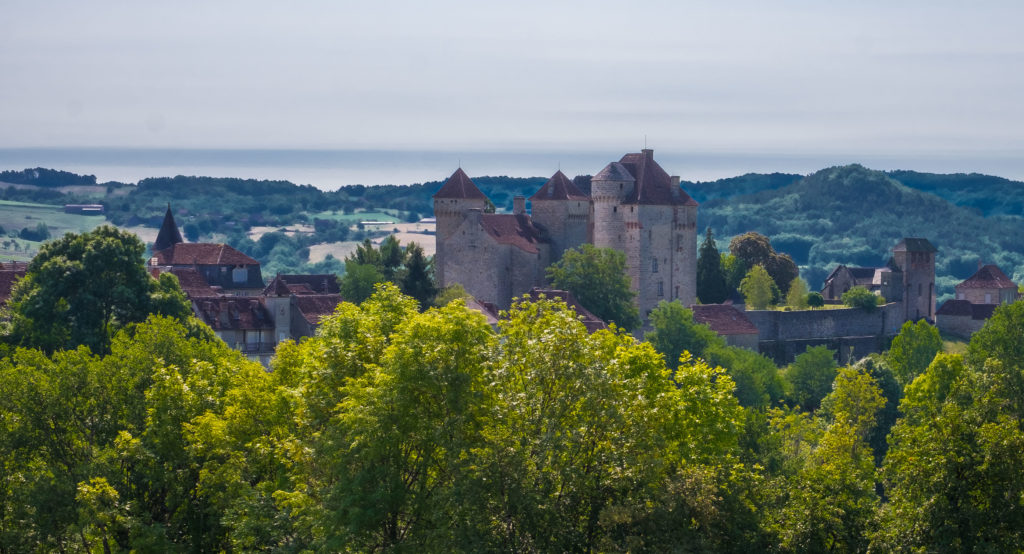
The 45th parallel runs through the center of the village (at least that’s what the local signage claims), so we are exactly halfway between the equator and the North Pole. Like other “strategically reinforced” towns, Curemonte sits on a bluff overlooking a broad green valley. The sun is brilliant, bearing down on the paving stones as I walk into the centre ville from the visitors’ parking lot just outside town.
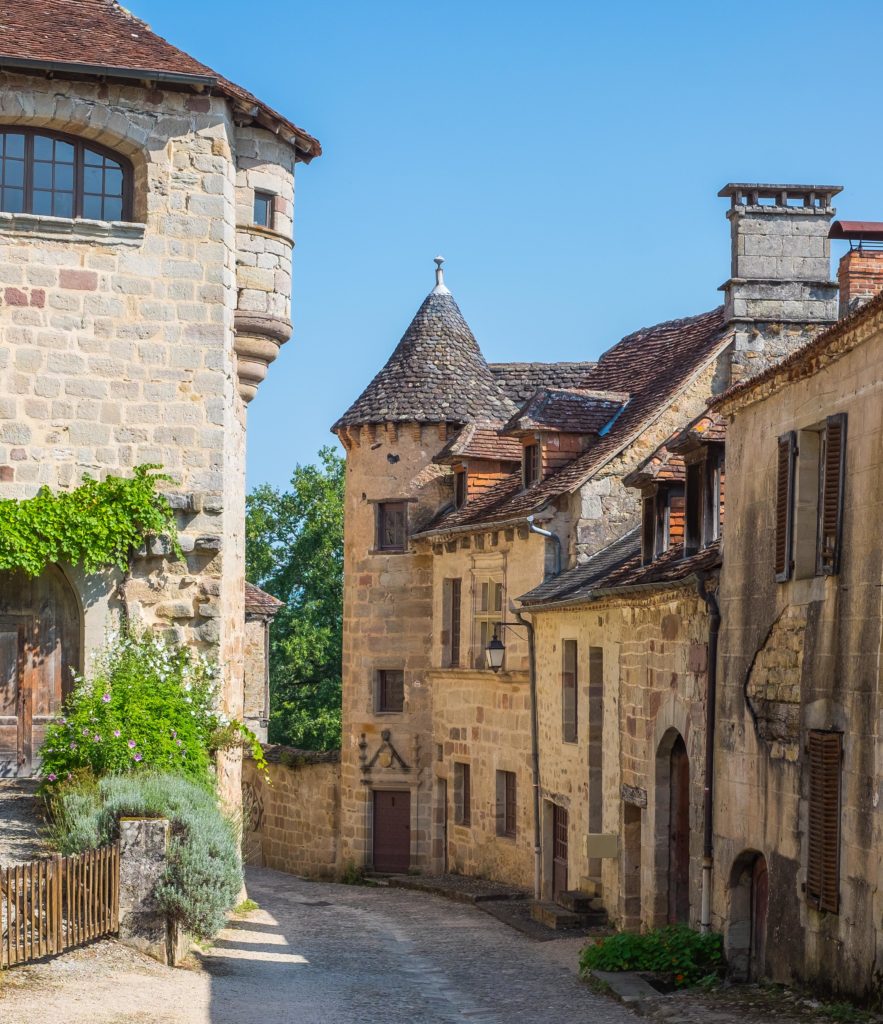
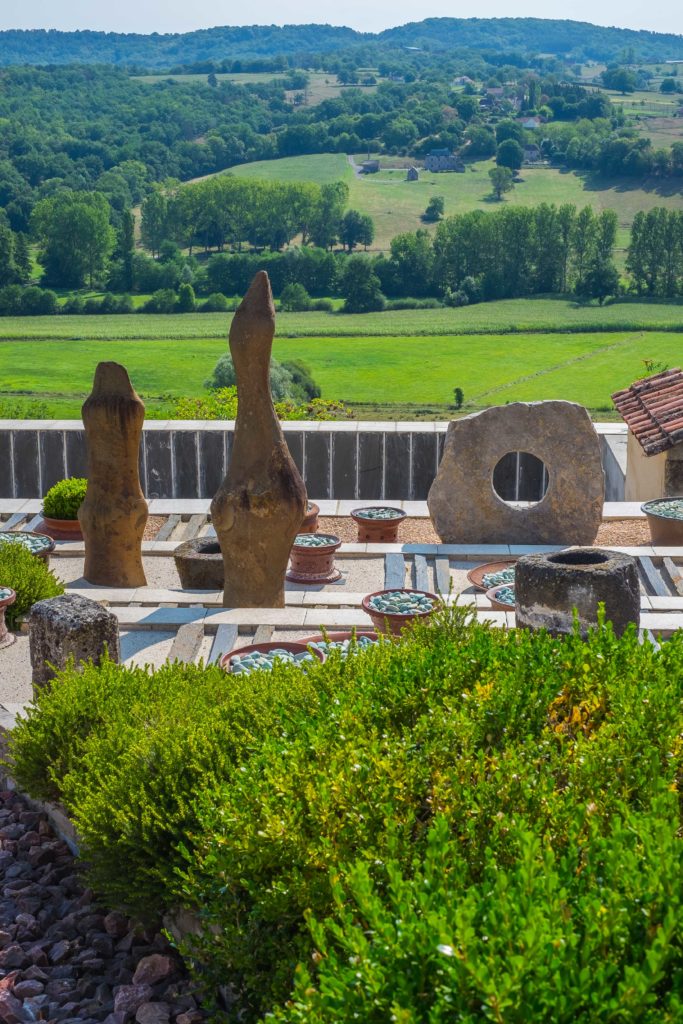
And it truly is a beautiful village. The narrow medieval streets are clean and authentic; flowers fill the boxes outside many of the windows on these ancient houses, and modern sculptures in the back gardens provide a contrast with the age of most of Curemonte’s structures.
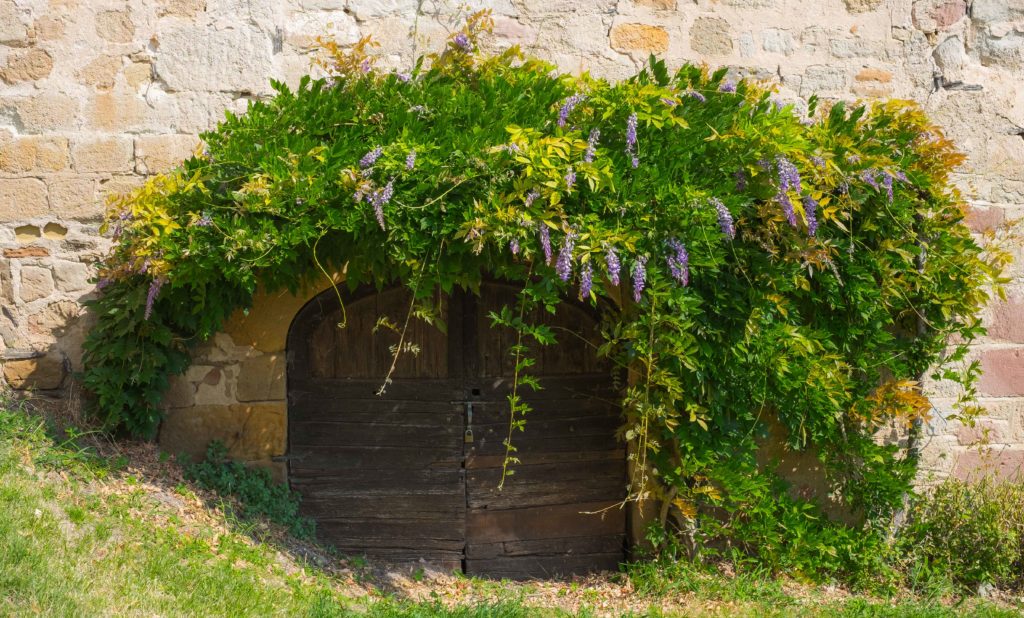
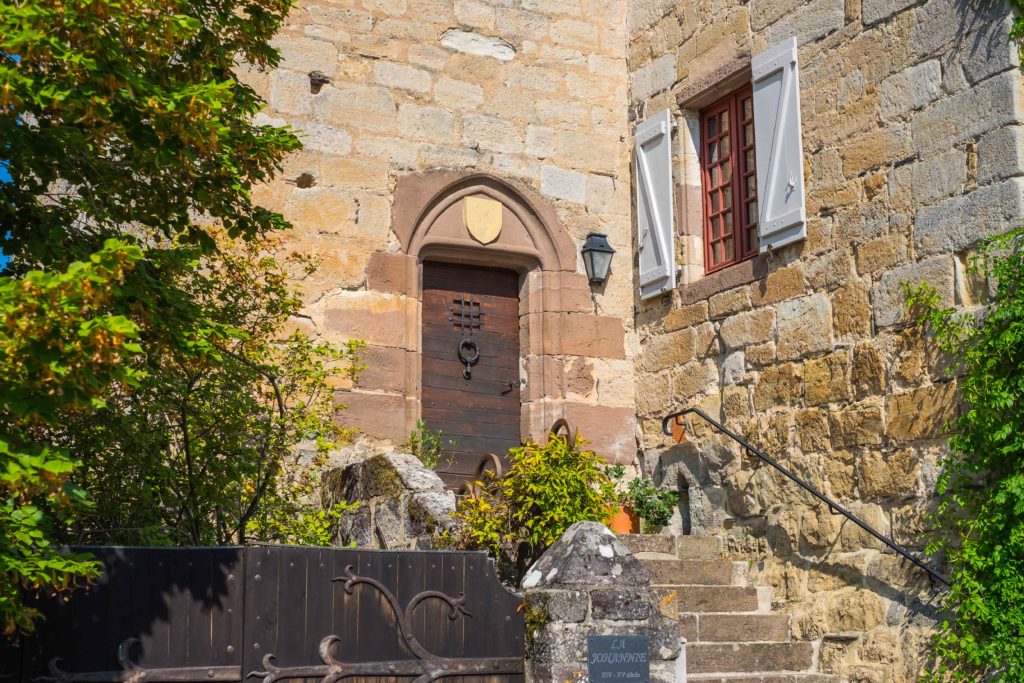
The historical sites
But it’s the three castles that dominate the town’s skyline and cast deep shadows over a large part of the village’s center. People have lived here since Gallo-Roman times, and there was an organized village on this site as early as 860 C.E. We know that a noble named Raymond of Curemonte was one of the knights who undertook the 1st Crusade in 1096. We know, too, that he was part of the orbit of the powerful Counts of Turenne (whose fortress town is just 25 minutes from here by car) – essentially an independent kingdom outside the authority of France’s kings which endured here until the 18th century.
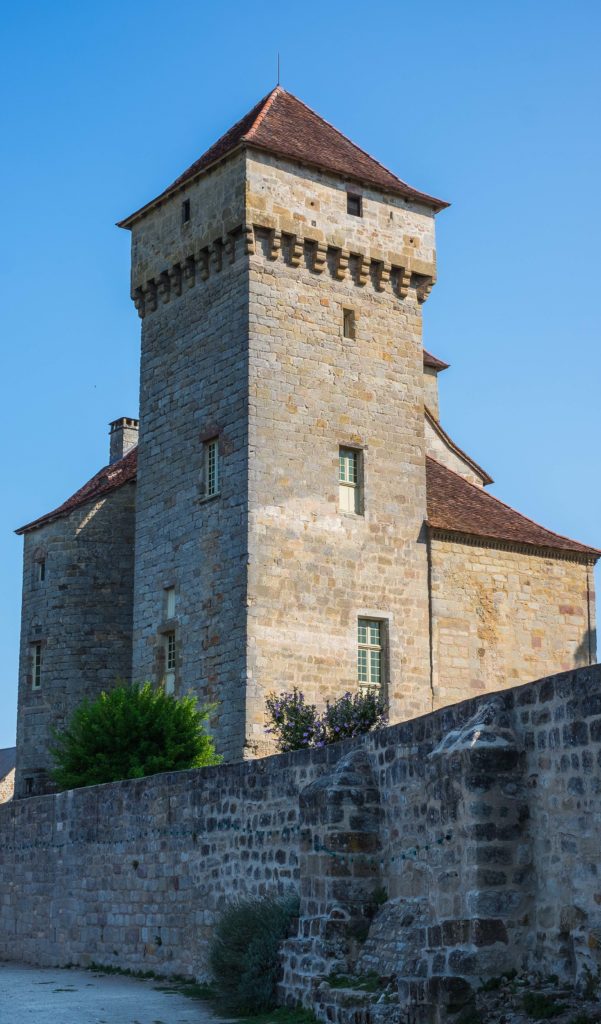
Not surprisingly, Curemonte attracted other noble families who built their houses here over the centuries. (In addition to the Curemontes themselves, the Aymar, Astorg, Cardaillac, and Plas families exercised control over the region at different times. Several members of these households became prominent politicians and bishops; in the 1500s, Jean de Plas was King Francois I’s ambassador to Scotland and the Vatican.)
Despite the ravages of the Hundred Years’ War and later uprisings, three of the castles built over the centuries by these families survive in the center of Curemonte:
- The castle of Saint Hillaire is the village’s “original” chateau, built in the 13th century C.E.
- The “integrated” castle of Saint Hillaire de Plas, added on to the original castle of Saint Hillaire by Jean de Plas in the 16th (It’s the part with the circular towers, sharing a wall with the older part of the castle.)
- The Chateau de Johannie. Built in the 14th century C.E., it’s the smaller castle next to the little market hall in the center of town.
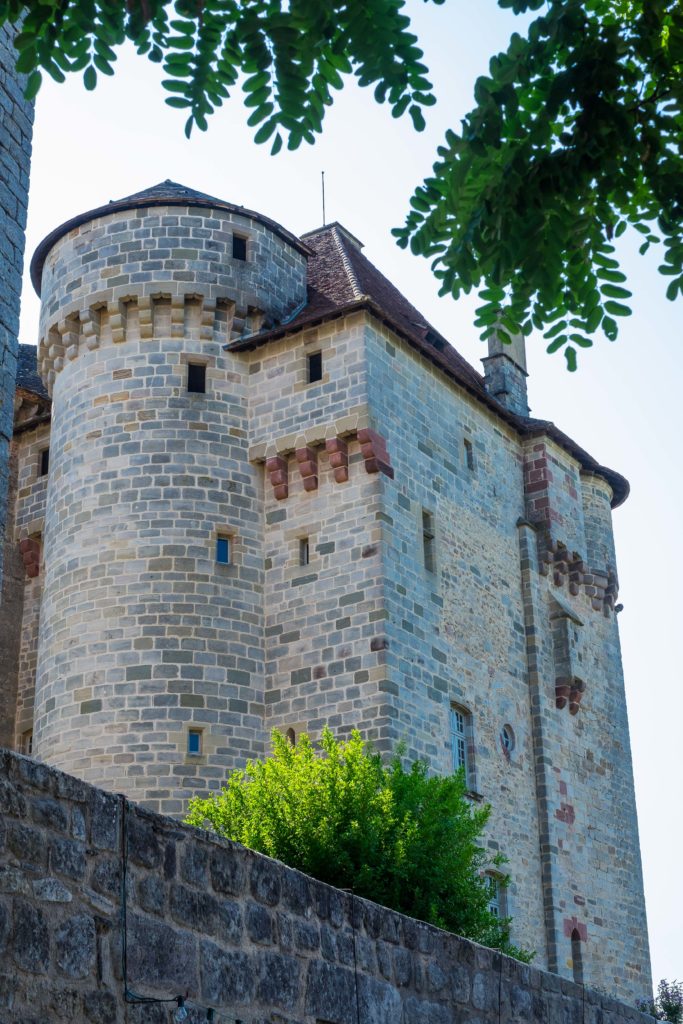
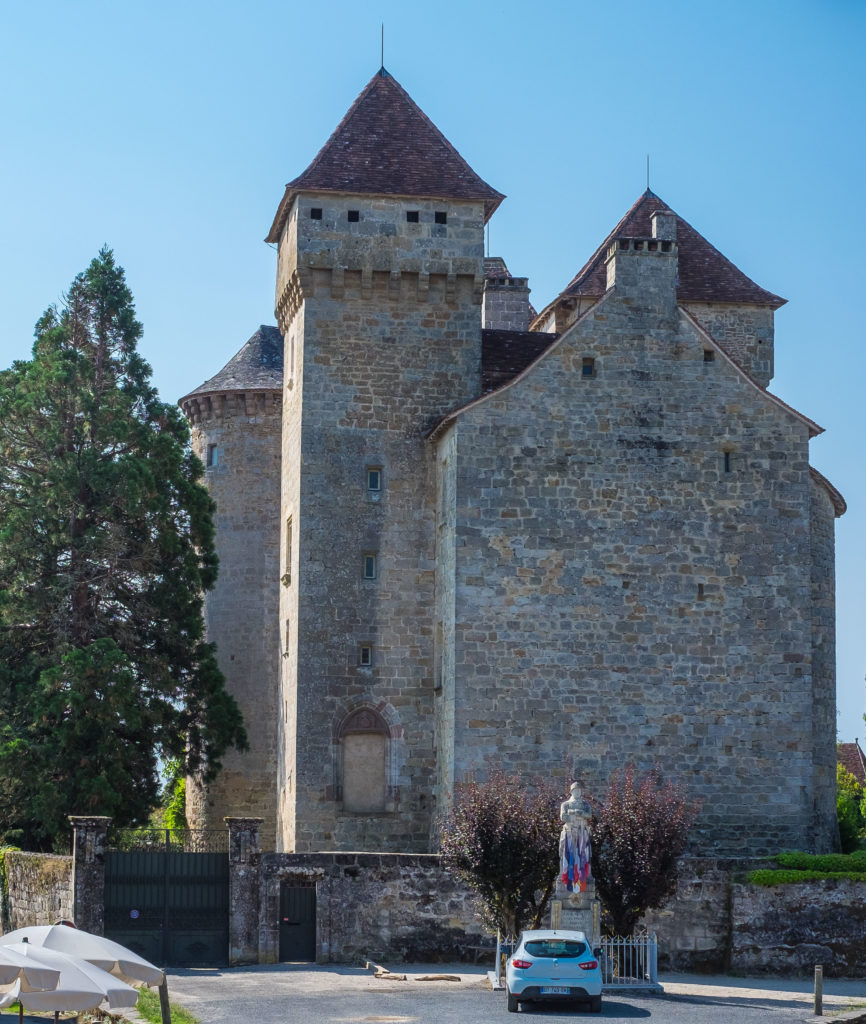
All three belonged to the Plas family until 1830. Disappointingly for the casual tourist, all three are privately owned and not open for visits...but the transfers of ownership over the decades led to another, more modern development in the history of this tiny community.
The Colette connection
One of the succeeding owners of the combined castles of Saint Hillaire and de Plas was a 28-year-old woman who inherited the place from her half-brother in 1940, just as the German occupation of France began. Her name was Colette de Jouvenel, and if that name seems vaguely familiar, it’s because she was the daughter of the great Colette, one of France’s best-known writers of the 20th century.

(A polymath who was at different times an actress, a radio personality, and a journalist, Colette wrote Gigi [later adapted for the musical by Lerner and Loewe] and was nominated for the Nobel Prize in Literature. She was the subject of a biographical movie starring Keira Knightley in 2018. Despite her importance as one of the century’s great writers, Colette’s reputation was tarnished in her later years by articles she wrote for pro-Nazi newspapers and the anti-Semitic characterizations that appeared in some of her late work.)
Colette de Jouvenel tried writing, too, while she lived here in Curemonte from 1940 to 1945, but she’s best remembered now for becoming one of the earliest activists in the French Resistance movement against the Nazi occupation. Her journalistic pieces covered the return home of French deportees, but she also wrote about the fight for gender equality and the importance of woman in the workplace after the war.
Colette herself came here to stay with her daughter for several weeks in 1941; there are some fascinating local signs which talk about how Colette de Jouvenel was “squashed” or “broken” (“écrasée”) by her famous mother, and I wondered to myself whether her active engagement in the Resistance was somehow a response to Colette’s later pro-German writings.
In any event, Colette de Jouvenel gave up her own career as a writer in 1946 and spent the rest of her life as an antiques dealer in Paris. She rarely returned to Curemonte and sold her châteaux here in 1949.
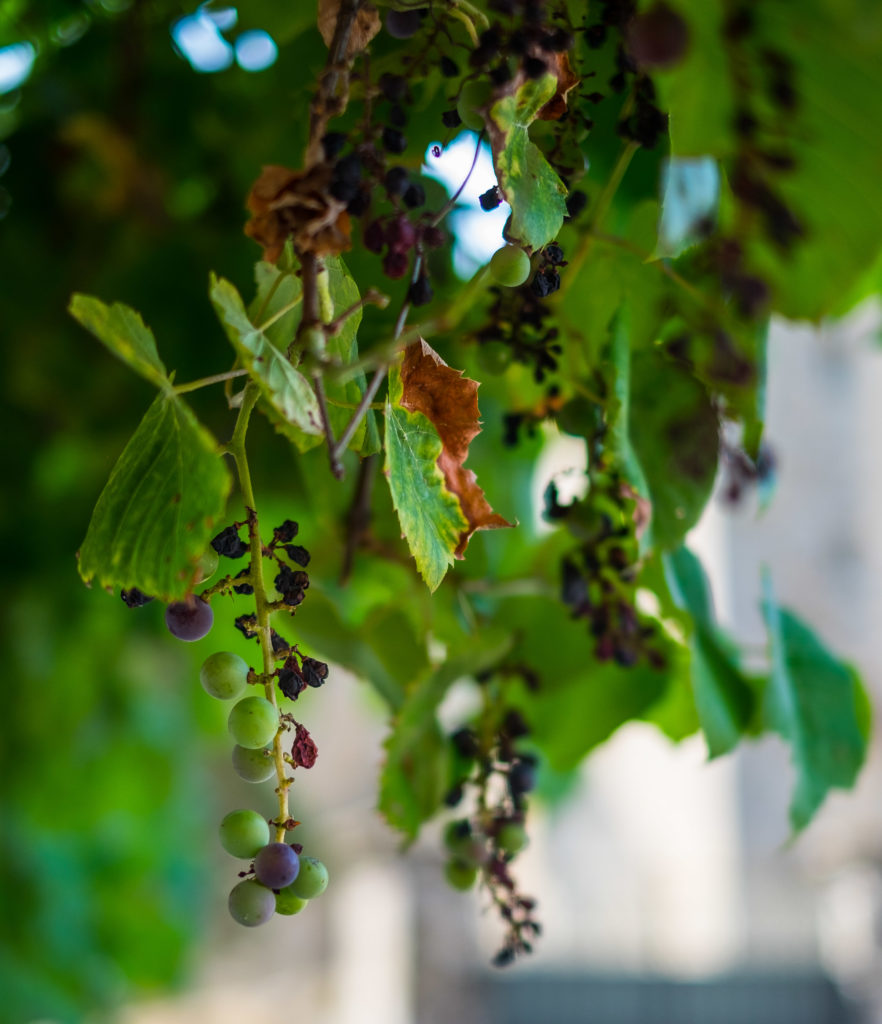
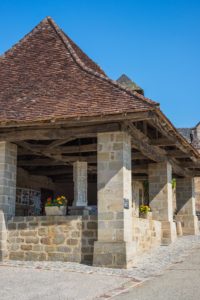
Visiting Curemonte today
The three castles, dominant as they are when you approach this little village, are not the only interesting things to see in Curemonte. The little market hall in the center of town (the halle aux grains) was built in the 19th century but has an older 16th century cross inside; it also has some great historical information, including several photo collections showing how the town’s castles fell into disrepair and then were restored again over the decades.
And just as Curemonte has three castles, it is also notable for the number of churches it has in such a confined area. The most important is the Eglise Saint Barthelemy, first built in the 11th century but “enhanced” regularly over the centuries; it especially appealed to me because the interior seems so colorful and warm compared to other stone churches of this era.
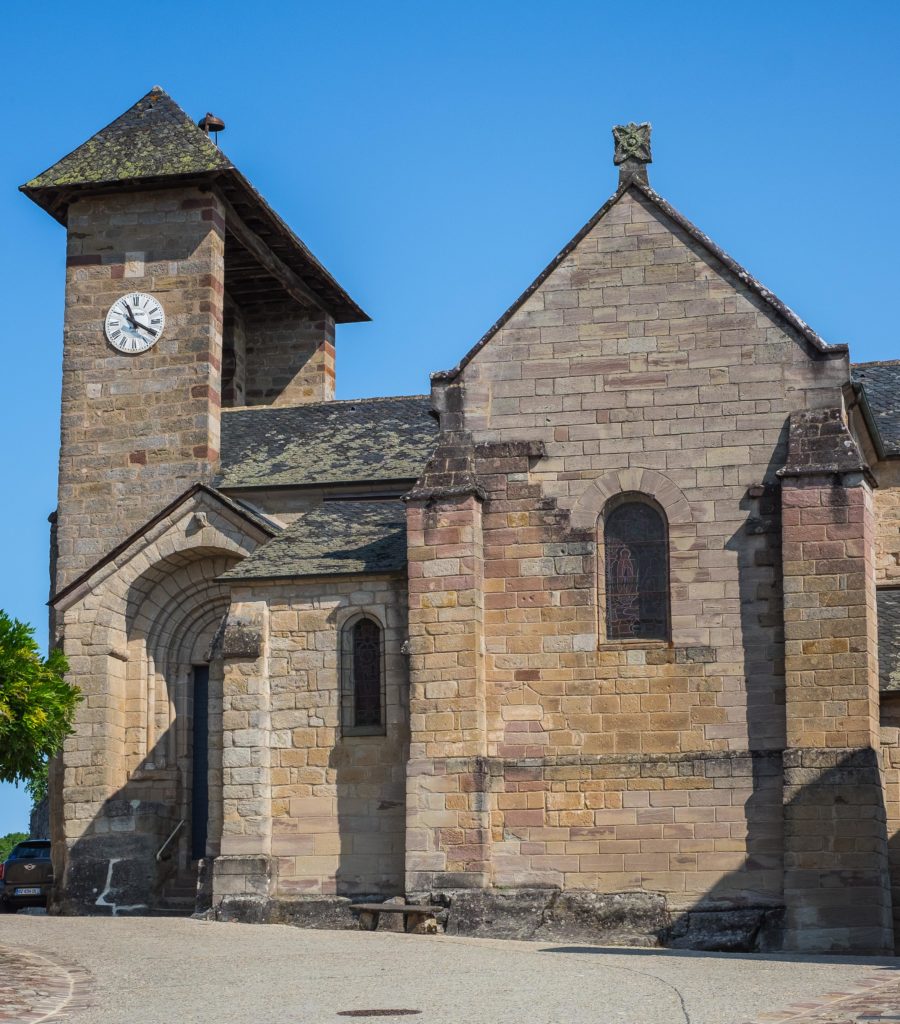
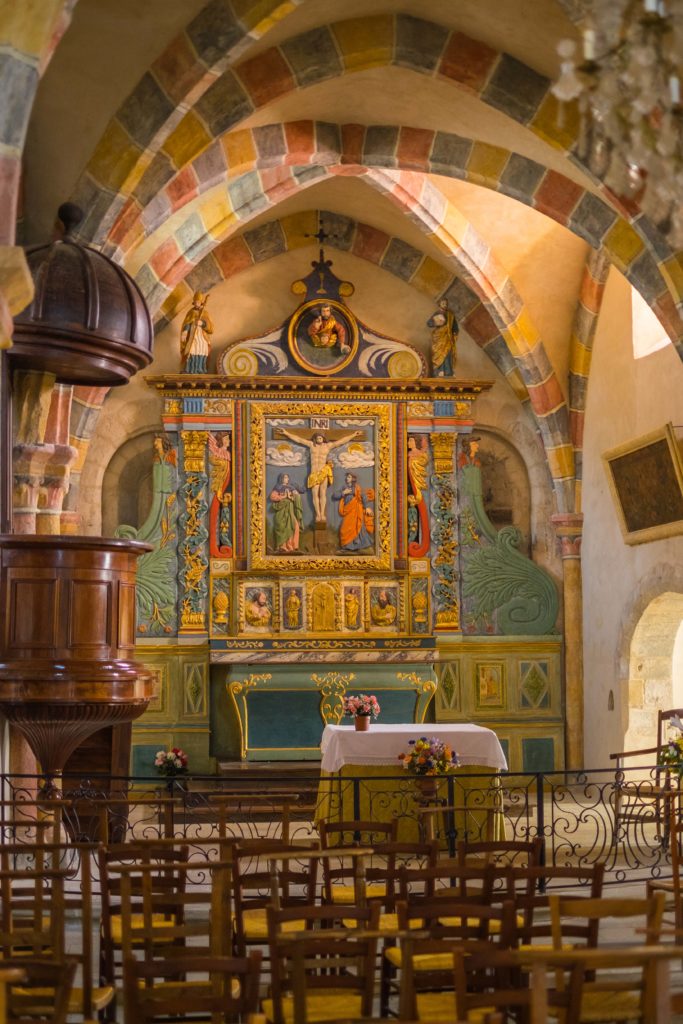
You can see all of this in the space of a few hours. As one tourism website puts it, Curemonte is “less 'modernized' than many of the plus beaux villages, adding to its charm, and also has less facilities than many. That is, there aren't lots of gift shops and cafes.” Still, walking through its narrow streets, taking in the dramatic profile of the three châteaux and the gorgeous green valley below, I found this one of the most appealing of France’s “most beautiful villages” in my recent travels.
Have you visited other “most beautiful villages” in your travels around France? What did you like best? Please tell us your experience in the comments section below. As always, I’d be grateful if you’d also take a second to share this post with someone else by clicking on the button(s) for your preferred social-media platform(s).
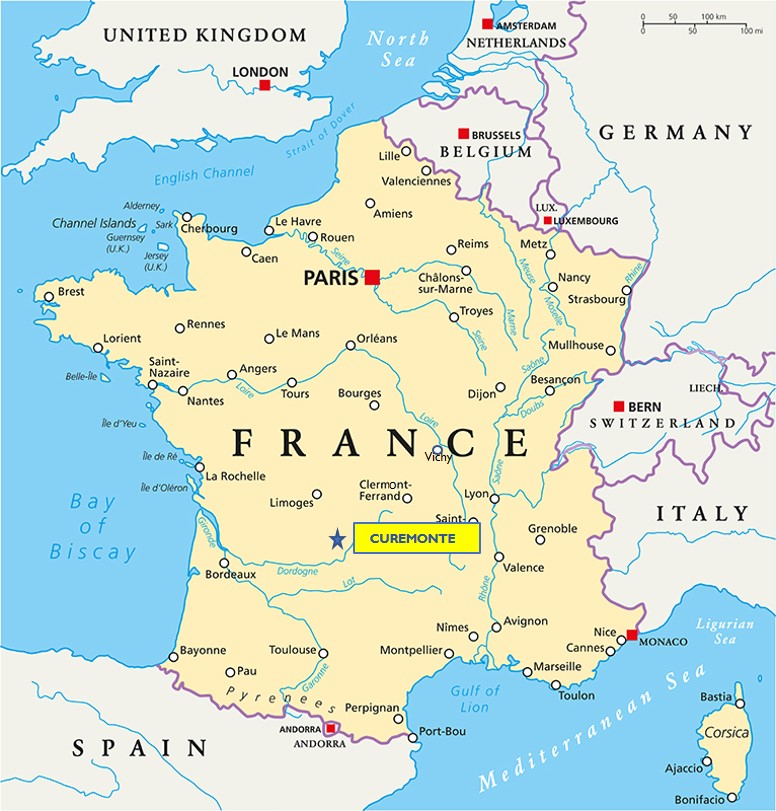
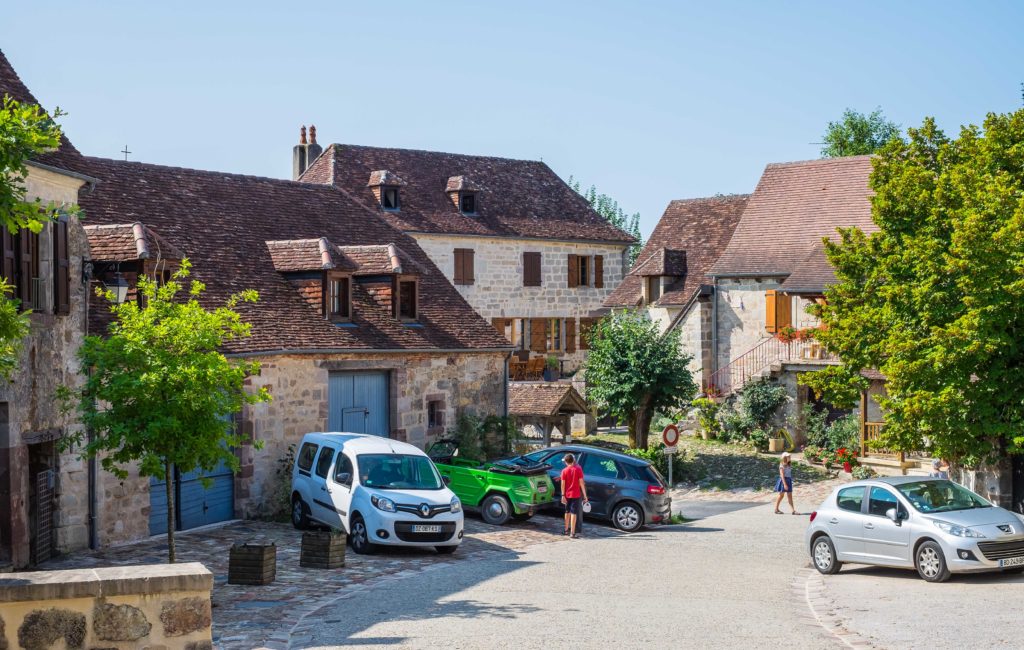
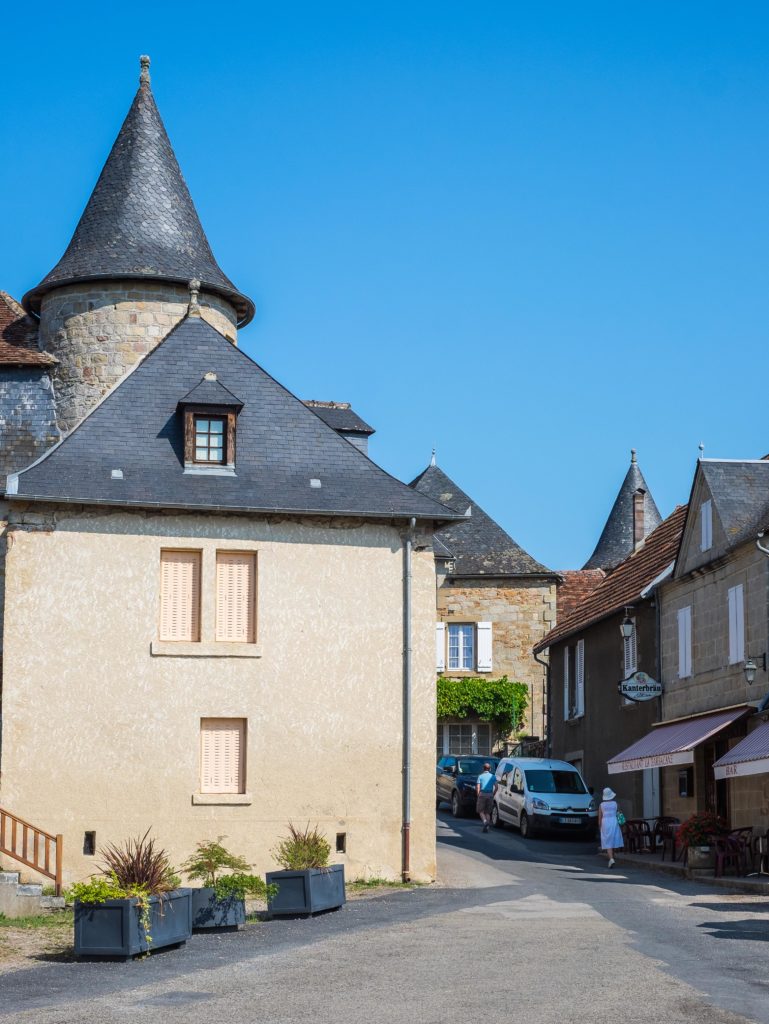
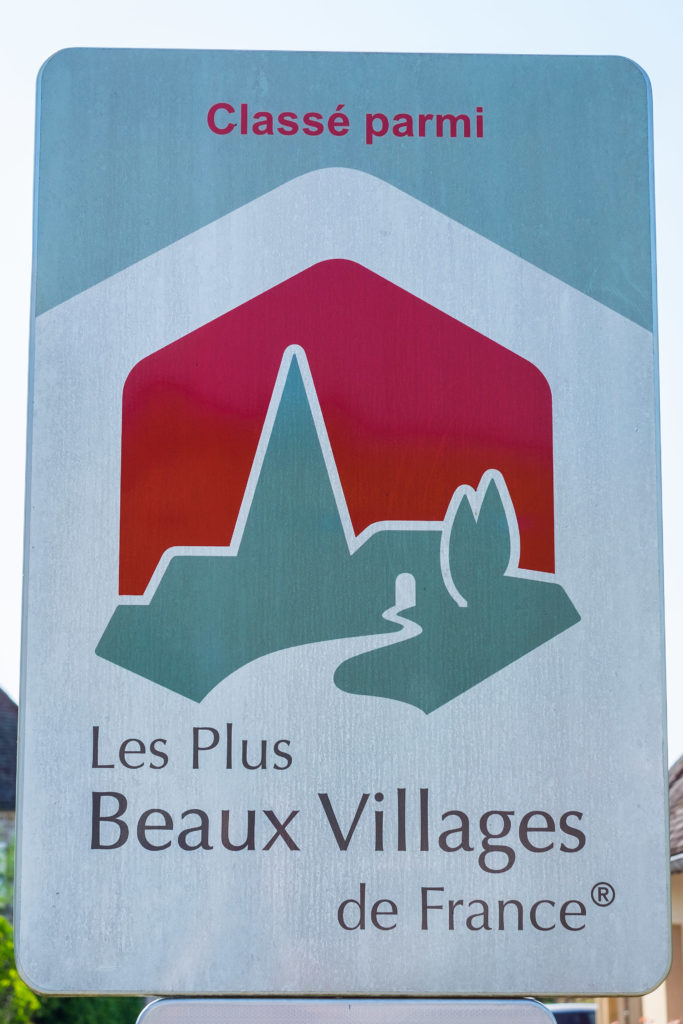
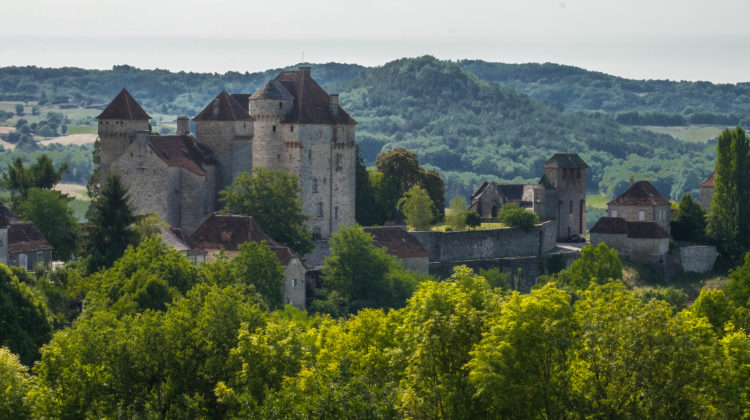

Celle-ci est tellement belle.
Oui – on est d’accord!